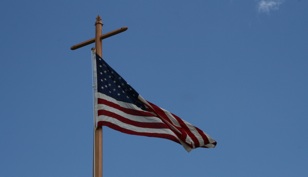Company F, 2nd Battalion Missouri State Militia Cavalry
Company F, 14th Kansas Cavalry
Little can be written about the Civil War that hasn’t already been said. Perhaps all that may be left to tell is the stories of those who lived it.
In 1845, a Kentucky-born man named Howard Nichols married a Tennessee gal named Peggy Sligar. They wed and started a family in Pettis County, Missouri. The Nichols family made their way westward in the years that followed, and by 1859, Howard purchased 40 acres right here in Bates County. The Nichols homestead lie just to the northwest of a new community called Crescent Hill which had been established the year prior. During this time, civil unrest was ever-increasing as this was the era of Bleeding Kansas and the infamous Missouri-Kansas Border War.
The Cass County Home Guard was organized between June and August 1861, and Howard Nichols joined their ranks. In July, they engaged in action near Parkersville (a small community in Boone Township, Bates County, southeast of Burdett), followed by another battle in and near Harrisonville. The following month, the Cass County Home Guard fought in the battle of Jonesborough. It was in this timeframe when Howard Nichols passed away, the direct cause unknown.
Six months following Nichols’s death, another band of state militia was being formed in Cass County. Although Howard’s eldest son, Thomas, was just barely 16 years old, he enlisted with the 2nd Battalion, Missouri State Militia Cavalry. The first few months of Thomas’s service were spent in the local area – Jackson, Cass, Bates, and Vernon Counties, including Pink Hill (Jackson), Montevallo (Vernon), Independence (Jackson), and Lone Jack (Jackson). After an expedition to southeast Missouri and North Arkansas, they returned to Jackson and Lafayette Counties until the men, including Thomas Nichols, were mustered out in March 1863.
Nichols soon enlisted again – this time in Kansas with the 14th Kansas Cavalry. Four days later, Quantrill and his men would raid Lawrence on August 21st. And then, on August 25th, General Ewing issued his controversial General Order No. 11, effecting Jackson, Cass, Bates, and Vernon Counties, which would thereafter be known as the Burnt District. (For anyone unfamiliar with Order No. 11, there’s a great deal to learn about its history and impact.)
The 14th Kansas Cavalry, including Thomas Nichols, moved south to Fort Smith, Arkansas and then conducted Operations in Cherokee Nation through Spring 1864. By October, the 14th had returned to Missouri and was part of conflicts at Westport and Newtonia. These men stayed on until June 1865, when the battalion was mustered-out. Nichols immediately returned to his family, now living in Paola, Kansas. His mother had remarried, and Thomas would also settle into married life by 1867. He and his new wife, Josephine Lyons, had two sons. The second son came along April 1874, and would be named Howard after his grandfather. Thomas died that December, leaving behind his young wife and two small children.
Howard and Thomas Nichols, father and son, were laid to rest in Crescent Hill Cemetery. They are also remembered at the Lt. Charles Garrison Veterans memorial – Howard at line 22, and Thomas at line 20 of section B.
